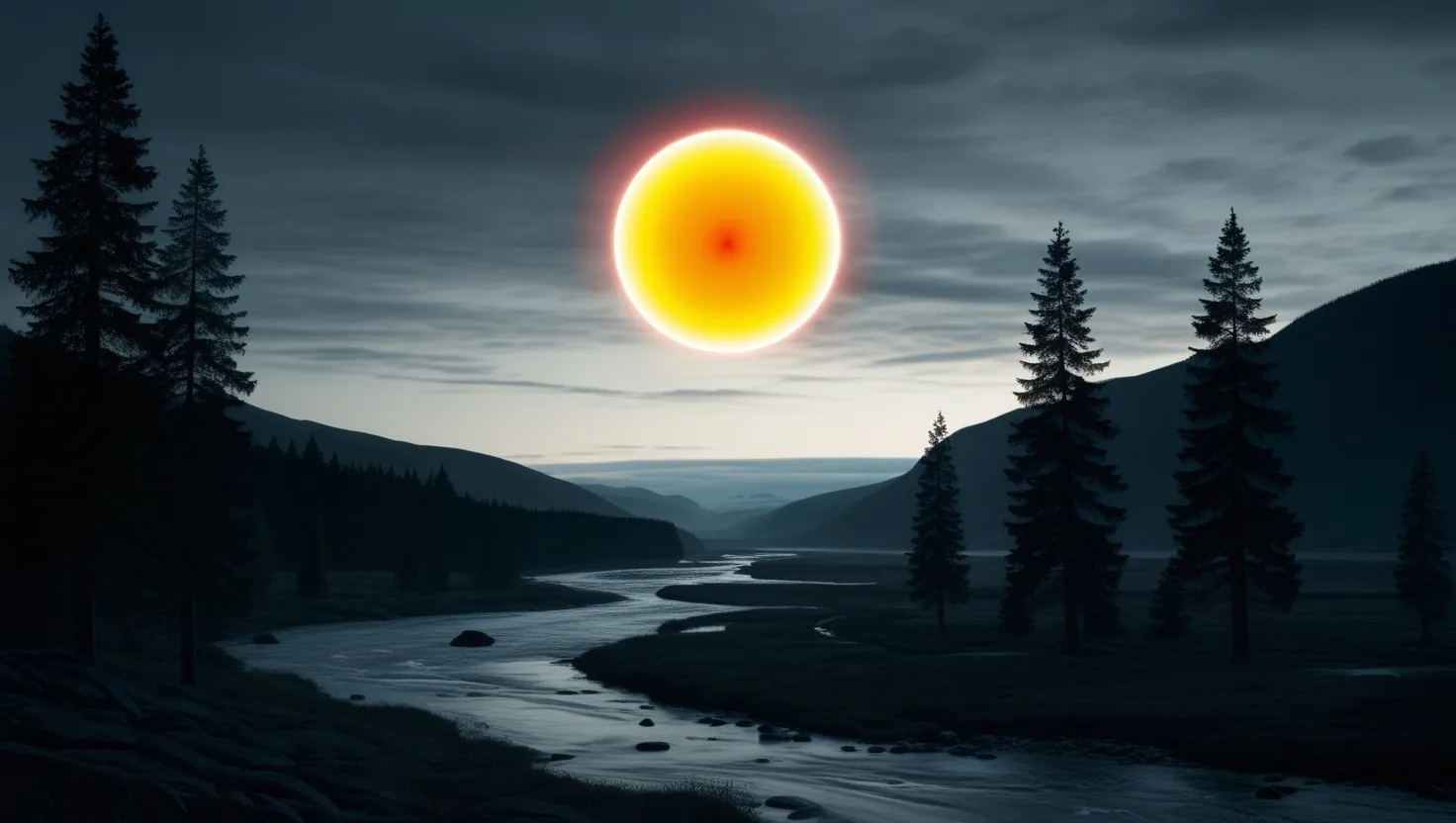If you ever find yourself deep in a quiet Norwegian valley as twilight grays the sky, you might notice—over the rivers, above the pines—a sphere of light as crisp as a lantern but oddly silent, drifting with the calm of a parentron. Sometimes it’s yellow, sometimes glaring red. You stare, half-expecting a sound, a puff of smoke, but hear nothing at all. That’s the Hessdalen Lights, a phenomenon I can only describe as being both brilliantly vivid and strangely indifferent to our presence.
Questions swirl immediately. Why here, and not everywhere? People have reported these lights for decades. Their frequency may have dulled in recent years, thanks perhaps to greater monitoring or shifting environmental factors no one quite understands, but their mystery has only thickened. Locals were the first to witness these “fireballs,” sometimes with such regularity that children might point them out before dinner. They behave as if aware, occasionally pulsing, splitting into twins, or abruptly freezing in mid-air as if contemplating whether to keep going. I have to wonder—can lights have intention, or are we simply projecting our need for connection onto the unexplained?
“Not only is the universe stranger than we imagine, it is stranger than we can imagine.” — Arthur Stanley Eddington
Once you dig past the surface, the story only gets stranger. In the 1980s, the lights showed up so frequently—sometimes twenty times a week—that a whole research station was built just to watch them. You might expect sounds: humming, crackling, the static fizz of electrical discharge. Yet nothing. They emit no warmth, leave no scorch marks, and don’t even singe grass despite glowing as if fueled by their own secret furnace. I’ve always found it particularly intriguing that, in a scientific world governed by measurement and replication, this one atmospheric phenomenon still refuses to fully cooperate.
Here’s a detail that doesn’t make the tabloids: spectrographic analysis of the lights found sudden spikes in elements like scandium, a rare metal not generally present in these Norwegian soils. A few minutes later, the readings drop and everything returns to normal. If you were conducting your own investigation, wouldn’t these transient, almost ghostly chemical fingerprints make you pause?
Let’s consider the physics. Classic ball lightning, for example, appears for mere seconds and is often associated with thunderstorms. Swamp gas? Forget it—the soil is too dry, and there’s little organic decay to spark those kinds of emissions. Military technology? Norway’s military swears there’s nothing in the valley, and most sightings occur without any radar traffic indicating aircraft or drones. Even tectonic explanations—crystals squeezing under shifting rocks to trigger the piezoelectric effect—don’t quite fit. There simply isn’t enough geological stress or measurable seismic rumbling, and yet, the lights persist.
This is where the puzzle deepens: radar studies from the 1980s caught a light moving at over 1,500 meters per second, then stopping mid-flight, a feat beyond any known craft. Sometimes two lights would move in formation, split, and then blink out as if rehearsed to fool not just people but also machines. Scientists have aimed lasers at the orbs, and witnessed shifting spectral signatures that suggest something more complicated than a glowing puff of air—perhaps a structure, or layers of plasma with properties unseen elsewhere.
Here’s a moment for reflection: If this valley’s lights react to observation—changing movement when people approach, sometimes even trailing researchers for stretches before veering off—what are we looking at? Is it possible the phenomenon responds to human interaction, or is that a trick of our pattern-seeking minds?
“Somewhere, something incredible is waiting to be known.” — Carl Sagan
Their pattern of appearing along rivers and ridges is another detail that often goes unnoticed. The lights sometimes seem to follow the valley’s natural boundaries almost as if they are mapping the land, sliding above water or zigzagging along tree lines. What natural mechanism could explain such purposeful motion? Atmospheric electricity might travel along certain paths, but the consistency and precision with which the Hessdalen Lights move cannot be explained by weather alone—or by any catalogued electromagnetic anomaly.
Of all the attempts to frame the phenomenon in scientific terms, the theory of a plasma-based light stands out as the most persistent. The valley’s unusual blend of iron and zinc, mixed with acidic groundwater, could hypothetically create an occasional floating battery. Yet, known plasma events can’t hover for minutes or pulse as if deciding its next move. If Hessdalen witnessed a kind of plasma i’ve never encountered elsewhere, what else might we be missing in our models?
A famous physicist once said, “If your experiment needs statistics, you ought to have done a better experiment.” The eccentricities of the Hessdalen lights stubbornly resist tidy data sets. For every image captured on an automated camera, for every electromagnetic spike on a sensor, a dozen more questions are born.
Let’s flip the script: what if the lights are not a single phenomenon at all? What if several rare and poorly understood events just happen to overlap in this spot—a geological event, a rare local gas, a whiff of solar wind hitting some magnetic relic under the ground? Or could we be seeing the tip of a process so new, and so rare, that we lack the instruments or language to describe it?
One of my favorite features of the Hessdalen story is human reaction: the blend of fear, curiosity, and almost routine acceptance among locals. In some ways, the valley’s residents have become stewards of mystery. Their willingness to host field stations and share stories signals a kind of partnership between community and science, a reminder that the greatest mysteries are not solved by experts alone.
“To raise new questions, new possibilities, to regard old problems from a new angle, requires creative imagination.” — Albert Einstein
I often find myself thinking: What role does culture play in shaping how we interpret these lights? In Norway, a land rich with tales of trolls and spirits, how does folklore color the pursuit for technical explanation? Does expectation somehow shape observation? Yet, the cold instrument readings, the videos, and the spectrometry all point to something physically real—a phenomenon neither myth nor trickery, but an objective anomaly.
The Hessdalen Lights serve as a useful counterpoint to our modern urge for quick answers. They force us to accept a rare kind of discomfort: that some things simply don’t fit our existing schemas. As technology advances—deploying new sensors, machine learning tools, perhaps satellites with more sensitive instruments—I believe we’ll see more data, but not necessarily more clarity. This is the beautiful, frustrating promise of strange science: every answer births another puzzle.
Have you ever wondered if our need for certainty blinds us to truly novel possibilities? Are the lights a glimpse of undiscovered physics or a persistent mocking of our scientific bravado?
Like a story you revisit through the years, the Hessdalen Lights wait patiently, glowing in the cold air, inviting us to look a little longer, ask better questions, and expand—not just our technical capacity—but our sense of wonder.
“In every walk with nature, one receives far more than he seeks.” — John Muir
What would you do if you saw the lights? Would you reach for a camera, a Geiger counter, a notebook, or just pause, wide-eyed, realizing that you’re in the presence of something that—at least for now—science cannot completely claim?
For me, that is the value of Hessdalen—the reminder that the universe still holds its own surprises, visible not just in distant galaxies or on quantum scales, but sometimes, burning quietly above a Norwegian valley, waiting for the right observer to ask the next question.






